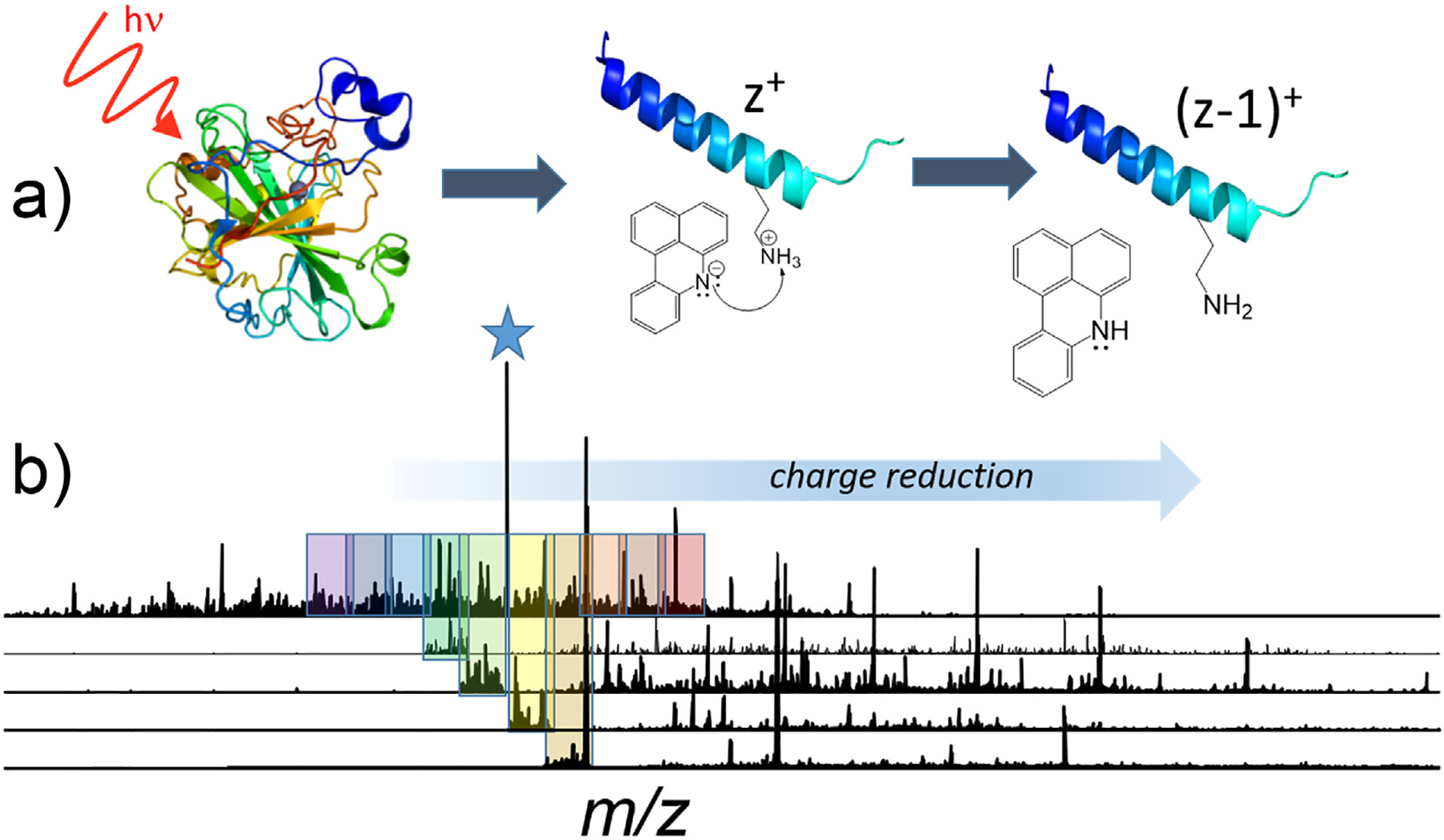Figure 3.

Proton transfer charge reduction (PTCR) reactions may be undertaken on fragment ions produced from top-down MS/MS characterization of proteins. A) UVPD of a protein generates many fragment ions (F) in a variety of charge states. PTCR using a suitable proton-scavenging reagent ion reduce the charge states of fragment ions (charge state z+), thus shifting them to lower m/z values (i.e., retaining the same mass m (aside from loss of a proton) and a lower charge state (z-1)+) and consequently dispersing the fragment ions over a broader m/z range. B) A protein, such as carbonic anhydrase (25+), creates many fragment ions upon UVPD. PTCR reactions undertaken on the groups of fragment ions outlined in the shaded boxes alleviates congestion in the MS/MS spectra and allows confident assignment of a much larger portion of the fragment ions. Adapted from [98].
